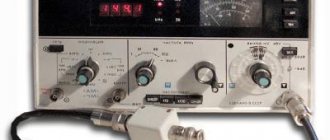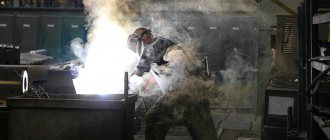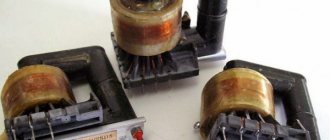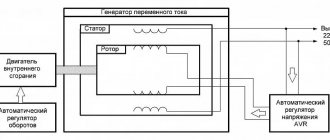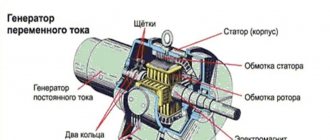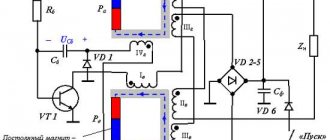Register Login
Publication date: February 8, 2020
Sometimes a brilliant idea that comes to the mind of an inventor acquires only basic features in his creation. And the revision and improvement is carried out by another specialist, who decided not just to bask in the rays of someone else’s glory, but also to offer his own vision of the design, for which the brightest prospects open up. This can be illustrated with the help of the generator of Ruslan Kalabukhov, through whose efforts the world witnessed the emergence of another model of a fuel-free device. The idea was quite interesting, but not new. Its prototype was Don Smith's generator, the design of which was refined and improved by the work of our compatriot.
Classification and types of units
All electric generators can be classified according to operating criteria and the type of fuel from which electricity is generated. All generators are divided into single-phase (voltage output 220 Volts, frequency 50 Hz) and three-phase (380 Volts with a frequency of 50 Hz), as well as according to the operating principle and type of fuel that is converted into electricity. Generators can also be used in various fields, which determines their technical characteristics.
According to the operating principle
There are asynchronous and synchronous alternating current generators.
Asynchronous
Asynchronous electric generators do not have an exact dependence of the EMF on the rotor speed, but a term such as “slip S” works here. It makes that difference. The amount of slip is calculated, so there is still some influence of the generator elements in the electromechanical process of the asynchronous motor.
Synchronous
Such a generator has a physical dependence on the rotational movement of the rotor to the generated frequency of electricity. In such a device, the rotor is an electromagnet consisting of cores, windings and poles. The stator are coils that are connected according to the star principle and have a common point - zero. It is in them that electric current is generated. The rotor is driven by an extraneous force of moving elements (turbines), which move synchronously. The excitation of such an alternating current generator can be either contact or non-contact.
By engine fuel type
With the advent of generators, distance from the power grid no longer becomes an obstacle to using electrical appliances.
Gas generator
Gas is used as fuel, during combustion of which mechanical energy is generated, which is then replaced by electric current. Advantages of using a gas generator:
- Safety for the environment, because gas during combustion does not emit harmful elements, soot and toxic decomposition products;
- Economically, it is very profitable to burn cheap gas. Compared to gasoline, it will cost much less;
- Fuel supply is automatic. Gasoline and diesel fuel need to be added as needed, and the gas generator is usually connected to the gas supply system;
- Thanks to automation, the device comes into operation independently, but for this it must be located in a warm room.
Diesel generator
This category consists mainly of single-phase units with a capacity of 5 kW. 220 Volts and a frequency of 50 Hz are standard for household appliances, so a diesel unit copes well with a standard load. As you might guess, it requires diesel fuel to operate. Why you should choose a diesel electric generator:
- Relative cheapness of fuel;
- Automation that allows you to automatically start the generator when the power supply is interrupted;
- High level of fire safety;
- For a long period of time, a diesel unit can operate without failures;
- Impressive durability - some models are capable of working for a total of 4 years of continuous use.
Gasoline generator
Such devices are quite in demand as household equipment. Despite the fact that gasoline is more expensive than gas and diesel, such generators have many strengths:
- Small dimensions with high power;
- Easy to operate: most models can be started manually, and more powerful generators are equipped with a starter. The voltage is adjusted for a certain load using a special screw;
- In case of generator overload, protection is automatically triggered;
- Easy to maintain and repair;
- They do not make much noise during operation;
- Can be used both indoors and outdoors, but should be protected from moisture.
Power supply circuit
For the initial start-up, a circuit is required that supplies a pulse of energy to the Tesla generator transformer. Next, the generator switches to self-oscillating mode and does not constantly need external power.
In developer slang, the power supply device is called a “kacher”. Those familiar with electronics know that the correct name for the device is a blocking oscillator (shock oscillator). Such a circuit solution generates a single powerful electrical impulse.
Many variants of blocking generators have been developed, which are divided into three groups:
- On vacuum tubes;
- On bipolar transistors;
- On field-effect transistors with an insulated gate.
A tube electromagnetic generator using powerful generator tubes operates with high output parameters, but its design is hampered by the availability of components. In addition, not two, but three winding transformers are required, so tube blocking oscillators are now rare.
Tube blocking generator
The most widely used devices are those based on bipolar transistors. Their circuitry is well developed, setup and adjustment are simple. We use domestically produced transistors of the 800 series (KT805, KT808, KT819), which have good technical parameters, are widespread and do not cause financial difficulties.
Blocking oscillator based on a bipolar transistorThe proliferation of powerful and reliable field-effect transistors has made it possible to design blocking oscillators with increased efficiency due to the fact that MOSFET or IGBT transistors have better parameters for voltage drop across transitions. In addition to increasing efficiency, the problem of cooling transistors becomes less problematic. Proven circuits use IRF740 or IRF840 transistors, which are also inexpensive and reliable.
Field effect transistor circuit
Before assembling the generator into a finished structure, double-check the workmanship of all components. Assemble the structure and supply power to it. The transition to self-oscillating mode is accompanied by the presence of voltage on the windings of the transformer (at the output of the secondary). If there is no voltage, then it is necessary to adjust the frequency of the blocking generator in resonance with the frequency of the transformer.
Important! When working with a Tesla generator, extreme caution must be exercised, since when starting, high voltage is induced in the primary winding, which can lead to an accident.
Details
How and where is the BTG generator used?
There are many different methods of generating power from a fuel-free generator or engine. In every field, the use of such a device undoubtedly brings benefits. Below we have provided brief descriptions of certain areas.
On road
It is not difficult to make a fuel-free electricity generator with your own hands, and it can perfectly replace diesel engines, which are used in the vast majority of heavy modern vehicles, namely buses, trucks, trains, and portable large-sized power engines. This list also includes many quarry and agricultural vehicles.
In the air
Both diesel and gasoline engines used in airplanes can be replaced with alternative energy sources, and even with fuel-free electric generators.
On the water
Fuel-free devices can be a worthy replacement even for the high-speed engines that ships, yachts and lines along the high seas have.
Underground
Fuel-free generators and engines can also replace diesel engines, as well as devices that are used in mining around the world. Similarly, fuel-free devices are replacing engines used to extract natural resources, namely precious metals, coal, iron ore and associated petroleum gas.
In medical institutions
In data centers
Fuel-free generators can be used for computers, and if your phone is not charging, the generator will be an excellent charger for mobile devices. When systems and servers go down, communications can be lost, workflow will stop and data will be lost, and even the entire workflow can be stopped completely. Fuel-free electrical energy devices can also be installed on the side of a two-wheeled vehicle. This must be done in such a way that as the vehicle moves, the fan begins to rotate and generates additional electrical energy.
Please note that when DC motors with power greater than 500 hp are connected to an AC unit whose power is lower than that of DC motors, the maximum power output of the generator can be obtained. https://www.youtube.com/embed/EGmYDXOD1x4
Design features
A conventional fuel-free generator is made from a rotor and a stator. It is the stator in the machine that does not move and is usually the outer frame of the machine. The rotor can move freely and is usually located in the interior of the machine. They are both made from ferrimagnetic materials. The slots are made along the inner periphery of the stator and the outer rotor periphery. The conductors are placed in certain slots in the stator or even the rotor. They are connected to each other, creating round windings. The one in which the voltage is induced is called the armature winding, and this name is also given to the current that is transmitted through it. Permanent magnets are used in certain machines to provide the main flow of the machines.
The TRU device from Stephen Mark is radically different from other fuel-free devices with its unusual design. You can’t make this fuel-free generator with your own hands, but it does not have radio frequency resonators. The working part of the device is made of a metal ring (its diameter is approximately 20 cm), onto which coils made of thick stranded wire are placed. The author showed his invention in public more than once, but after that it was decided to keep the original development strictly classified. And yet, thanks to his followers, another version was published - Ottp Ronette, which had differences from the original. She had a pair of plastic rings to which a thick pair of wires was attached. The wires themselves were connected crosswise.
Does not work
Despite the step-by-step video tutorial, almost no one who has tried to do it can assemble and launch a free energy generator with their own hands. The reason is not in the hands, but in the fact that the scientist, having given people a diagram with a detailed indication of the parameters, forgot to mention several small details. Most likely, this was done deliberately to protect his invention.
The theory about the falsity of the invented generator is not without meaning. Many energy companies are working in this way to discredit scientific research into alternative energy sources. People who follow the wrong path will ultimately be disappointed. Many inquisitive minds, after unsuccessful attempts, rejected the very idea of free energy.
A little history
At the end of the 20th century, Viktor Maksimovich Khmelevsky accidentally creates something similar to a fuel-free generator. According to the official version, the scientist wanted to create a power supply to convert direct current into alternating current, but something went wrong
Khmelevsky immediately understood the importance of the invention and proposed the development to geologists, but it did not take root
The scientist then tried to get a patent, but failed again, this time due to bureaucratic problems. The patent was refused due to errors in the description of the device's operation. Despite the unenviable fate of the scientist, his development is still popular - for example, on the Internet, hundreds of different sites sell the circuit of the current Khmelevsky generator. But, unfortunately, most of these offers are scams designed to extract more money from gullible buyers.
The Internet is constantly discussing old and new inventions that could be a breakthrough in the energy sector: the Kromrey generator, the Kalabukhov BTG, the Roche generator and other developments. Some of them turned out to be publicity stunts, while others turned out to be beautiful theories, unattainable in life. How are things going with Khmelevsky’s fuel-free generator?
Video selection on the topic
Many people have thought about the possibility of owning a source of renewable energy in their lives. The brilliant physicist Tesla, known for his unique inventions, who worked at the beginning of the last century, did not make his secrets widely public, leaving behind only hints of his discoveries. They say that in his experiments he managed to learn how to control gravity and teleport objects. It is also known about his work in the direction of obtaining energy from under space. It is possible that he managed to create a free energy generator.
Galvanic cell
The next method is simple chemistry. This is the most realistic and understandable way to generate electricity from the ground at home. For this you need copper and zinc electrodes. Their role can be plates, pins, nails. If copper is common, problems with zinc may arise, so it is easier to find galvanized iron.
You need to drive your electrodes into the ground at the same distance from each other. Let's say 1 meter deep and 0.5 meters between the electrodes. In this case, copper will be the cathode and zinc will be the anode. The voltage of such an element can be of the order of 1-1.1 Volts. This means that in order to get 12 volt electricity from the ground, you need to drive 12 such electrodes and connect them in series.
The decisive factor in such a battery is the area of the electrodes; the current strength depends on this, as well as on what is located between them. In order for the battery to produce current, the ground must be moist, for this it can be watered, sometimes the zinc electrode is filled with a solution of salt or alkali. To increase the current output, you can pack more electrodes and connect them in parallel. All modern batteries and accumulators are designed this way.
In the diagram below you see another interesting implementation of such a battery made of copper pipes and galvanized rods.
However, over time, the electrodes will deteriorate and the battery will gradually stop working.
Battle for Earth
What will happen to the world if such a generator appears in every home? The answer is simple, as is the principle by which self-powered free energy generators operate. It will simply cease to exist in the form in which it exists now.
If on a planetary scale the consumption of electricity, which is provided by a free energy generator, begins, an amazing thing will happen. Financial hegemons will lose control over the world order and fall from the pedestals of their prosperity. Their primary task is to prevent us from becoming truly free citizens of planet Earth. They were very successful along this path. The life of a modern person resembles a squirrel race in a wheel. There is no time to stop, look around, or begin to slowly think.
If you stop, you will immediately fall out of the “clip” of those who are successful and receive rewards for their work. The reward is actually small, but compared to many who do not have it, it looks significant. This way of life is a road to nowhere. We burn not only our lives for the benefit of others. We are leaving our children an unenviable legacy in the form of a polluted atmosphere, water resources, and turning the Earth's surface into a landfill.
Therefore, everyone's freedom is in his hands. Now you have the knowledge that a free energy generator can exist and operate in the world. The scheme by which humanity will throw off centuries of slavery has already been launched. We are on the verge of great change.
The high cost of traditional energy sources is forcing more and more people to think about creating an alternative energy source. As a rule, the choice is given to so-called fuel-free generators, because their operation does not require either an internal combustion engine or another device in which valuable raw materials will be burned.
During operation of a fuelless generator, electricity in the system is recirculated through the coil in the opposite direction, thereby ensuring the presence of voltage in the electrical network.
Currently, there are two ways to create a fuel-free generator, namely wet, also called oil and dry.
When creating a generator using the wet method, you will need a battery. While a generator operating on the principle of the dry method does without a battery.
Wet method
In order to assemble a wet fuel-free generator, the following components will be required: A battery is necessary to accumulate energy in it and store it.
Transformer - used to create direct current.
An amplifier is needed to increase the current supply. This is necessary due to the fact that the battery is not capable of producing the required power; as a rule, its maximum power is 12 or 24 V.
The charger ensures uninterrupted operation of the generator.
Generator assembly diagram
The AC transformer is connected to a permanent network, to a battery, and then to a power amplifier. Then you need to add a charger to the circuit. The assembly stage is completed by an expansion sensor, which is connected back to the battery.
Dry method
The operating principle of a dry fuel-free generator is based on the presence of capacitors. This type of energy production is currently the most advanced and efficient. Since it can work continuously and without recharging for 3 years.
Dry generator circuit
The generator has a simple circuit that consists of a pair of coils with capacitors, transformers and a magnet. The peculiarity of this generator is that the coils must be tuned to resonance with each other. And the model itself should be oriented strictly from north to south.
The creation of a dry fuel-free generator begins with the creation of coils. To do this, you should take a copper wire with a cross-section of 1.5 mm, it should be wound on wooden sticks, which are fixed at a distance of 500 mm from one another. It should be remembered that the number of turns on both sticks should be equal (for example, 12 turns).
The second layer of turns should be made with wire with a large cross-section (for example, 2.5 mm). This wire, like the previous one, is laid on two coils, but with six turns each. Next, it is recommended to take another wire, but of a different color and cross-section of 2.5 mm, and make another 6 turns. It is very important that the number of skeins and the winding direction be the same.
Next, the finished coils are fixed on a moving mechanism. It should be remembered that when moving, the coils should move without effort, distortion or tension. Next, you can begin assembling the entire mechanism. A magnetic resonator (magnet) is fixed in front of the coils, then you should take capacitors of at least 500 μF and place one capacitor inside the coils and two capacitors on the outside. The last thing we connect is the transformer. All parts are connected to each other using soldering.
Who led the development of the free energy generator
Adams generator
In 1967, a patent was received for the production of this generator. The BTG turned out to be working, but the power it produced was so small that it would hardly be possible to provide energy to even a small room with its help.
But scammers don't care. Therefore, on the Internet you can find sites selling the Adams generator. But why spend money on a device that won’t help you save money?
Tesla Generator
The life and work of the famous scientist have long been overgrown with various inventions. Nobody knows for sure which of them is true and which is fiction. And this has become an endless source of inspiration for swindlers.
Nikola Tesla really tried to invent a special device. Not a fuel-free generator, but a perpetual motion machine. But let's be realistic. Think about it, if a scientist managed to come up with such a device, would they sell it to the masses?
Hendershot Generator
Information about this device first appeared in America at the beginning of the twentieth century. But the generator became widely known during a congress dedicated to the study of the energy of the gravitational field, which was held in Toronto in 1981.
The Hendershot generator works thanks to the earth's magnetic field, so its use causes some difficulties, because the generator must always be correctly located relative to the south and north poles of the planet.
Soon after the convention, Lester Hendershot was considered a fraud, and his device was declared a fake.
Generator by Tariel Kapanadze
Tariel Kapanadze is a Georgian inventor who, as many believe, has achieved the impossible. He invented BTG, and named it in his honor - capagen. The functionality of the device was demonstrated to the audience. But it is difficult to say whether this was a show or a demonstration of a real fuel-free generator, because Kapanadze keeps his technology secret, awaiting a rich sponsor for the further development of the project.
Despite the secrecy of the project, some sellers claim that they managed to obtain Kapanadze generator circuit diagrams, according to which they can assemble it themselves. But this is hard to believe.
Donald Smith Generator
Donald Smith is the most famous inventor of the fuelless generator. The design of the device is quite simple: a wave resonator is taken and oscillated using a spark generator. In addition, the circuit contains diodes, the function of which is completely unclear. But most importantly, where does the additional energy come from in the generator, and even in an amount of about 10 kW?
Donald Smith tried for a long time to explain the principle of operation of his invention, but they could not understand it. Many tried to replicate this device, but the power always turned out to be much less than that of the original.
Stephen Mark TPU Generator
The design of Steven Mark's device is very different from other BTGs, since the basis of the TPU generator is a metal ring with a diameter of 20 cm and coils of thick stranded wire placed on it.
It is very difficult to assemble the TPU Mark generator yourself. The complexity of the design lies in the use of a multiphase master generator. In addition, neither the inventor himself nor his followers ever spoke about the principle of operation of the device.
Kulabukhov generator
Inventor Ruslan Kulabukhov came up with BTG for everyday use. But alas, he was never able to explain the operating principle of his invention, which casts doubt on the effectiveness of the device.
There are no arresters in the design of the BTG. The mechanism consists of a high-frequency cacher part and a low-frequency push-pull part. On the Internet you can find many different schemes for assembling a generator. But it was not Ruslan himself who created them, but his assistants. But few people managed to assemble a working mechanism according to these drawings, because, as mentioned above, even the author himself cannot explain the operating principle of his BTG.
Watch this video on YouTube
Khmelevsky generator
At the end of the twentieth century, Khmelevsky, by pure chance, invented a device similar to a fuel-free generator. He tried to get a patent for it and sell it as a useful tool for geologists. But the device did not gain popularity among the latter, so the production of generators was stopped.
Watch this video on YouTube
Despite all of Khmelevsky’s failures, his BTG scheme is popular on the Internet. It can be purchased for a small amount.
Of course, you can try to verify the opposite and assemble the BTG yourself. But is it worth spending time and money on this?
General rules for constructing an axial generator
1. The distance between the magnets in a circle on the disks should be equal to their width, but the denser the better, ideally if the magnets are almost close to each other. Below I described in more detail, if you can’t decide, make the distance equal to the width of the magnets, it will work like everyone else. 2
Round magnets, square, or rectangular, it doesn’t really matter, this will then be reflected in the shape of the coils. For the first option, round magnets and coils are easier
3.The thickness of the disks should be equal to the thickness of the magnets, or slightly thinner. 4. The number of turns in the coils for a 12V battery is 60 turns, for a 24V VCB is 90 turns. 5. Thickness of the stator according to the thickness of the magnets. 6. The ratio of coils to magnets is 4:3, for 9 coils there are 12 magnets, for 12 coils there are 16 magnets. Single-phase generators are not made because there will be strong vibration of the generator during operation. The ratio of magnets to coils should be as follows:
for every three coils there should be four magnets, the ratio is 3/4. That is, for 9 coils there should be 12 magnets on disks. There should be 16 magnets for 12 coils. There should be 24 magnets for 18 coils (24 magnets on each of the two disks). You can make a ratio of 2/3, the generator will also work, but as some experiments have shown, this option loses a little, more details here - Testing generators with stators for 12 and 18 coils, which turned out to be better
The magnets must be at least 10 mm thick, although it can be thinner, but then you will have to make a thin stator; in general, the stator should be approximately equal to the thickness of the magnets. The shape of the magnets, whether they are round, square, or rectangular, is not particularly important, then this will affect the shape of the coils, whether they will be exactly round or triangular in elongated shape. For large and powerful generators from 1.5 kW, magnets can be installed with a thickness of 15-20 mm, and a thicker and more durable stator can be made with a thickness of 15-20 mm.
Usually the distance between the magnets is made equal to their width, but the larger the area of the disks filled with magnets in a circle, the better. The closer the distance between magnets, the better. But if you make the distance between the magnets equal to the width of the magnets themselves, or half the width of the magnets, then it will also work fine. Due to the increase in the diameter of the disks, the speed of the magnets per revolution increases, and the voltage of the coils increases in proportion to the increase in the speed of movement of the magnets.
But those turns of coils that work are those that fall under the magnets, so the rarer the magnets on the disk, the fewer turns of coils take part in the work, and here the gain is only in diameter, but it turns out to be a big scratch and a lot of copper is wasted. if you place the magnets close to each other, the diameter of the disks becomes smaller, there are more turns in the work, and there is less copper. This is generally more effective.
I usually make the distance between the magnets equal to their width, but those who made the arrangement of the magnets denser, and even closely with smaller diameters and sizes of generators, received the same result. It's up to you to decide what to do here.
For a circuit of 9 coils with 12 magnets
Round magnets are suitable, and it is better to place them on the disk almost close to each other. The inner diameter of round coils can be made smaller than the diameter of the magnet.
For 12 coils with 16 magnets
You can also make round coils and install round or better square magnets. The closer the distance between magnets, the better. And so, depending on the size, you can make a distance of about 5-10 mm between the magnets; if they are square, then in the narrowest place there should be such a distance.
For 18 coils with 12 magnets
It is better to use rectangular magnets with a distance equal to their width. In this case, the inner hole of the coil should be almost equal to the size of the magnet. If 24 magnets are placed on disks, the distance between the magnets will be close.
Below is a drawing to compare how much the coils overlap with magnets if the magnets are placed almost closely and with a distance between the magnets equal to their width.
>
There is also the same option for covering stator magnets with 18 coils and 12 coils.
>
Which option is better? There is no clear answer to this question; any option will work. It’s probably easier to do it like most people, with the distance between the magnets equal to their width, since copper is cheaper and you don’t have to save it.
Neutral wire method
Voltage is supplied to a residential building using two conductors: one of them is phase, the second is zero. If the house is equipped with a high-quality grounding circuit, during periods of intense electricity consumption, part of the current flows through the grounding into the ground. By connecting a 12 V light bulb to the neutral wire and ground, you will make it glow, since the voltage between the zero and ground contacts can reach 15 V. And this current is not recorded by the electric meter.
The circuit, assembled according to the principle of zero - energy consumer - earth, is quite working. If desired, a transformer can be used to equalize voltage fluctuations. The disadvantage is the instability of the appearance of electricity between zero and ground - this requires the house to consume a lot of electricity.
Despite the fact that such a system uses the earth to operate, it cannot be classified as a source of earthly electricity. How to extract energy using the electromagnetic potential of the planet remains open.
Sources
- https://texnotoys.ru/elektronika/svobodnaya-energiya-svoimi-rukami.html
- https://FB.ru/article/220152/generator-svobodnoy-energii-svoimi-rukami-shema
- https://www.syl.ru/article/190368/new_generator-svobodnoy-energii-s-samozapitkoy-svoimi-rukami-shema-generatora-svobodnoy-energii
- https://generatorexperts.ru/alternativnye-istochniki/adamsa-vega.html
- https://FB.ru/article/339048/generator-svobodnoy-energii-shema-prakticheskaya-opisanie
- https://rusenergetics.ru/oborudovanie/generator-tesla
- https://amperof.ru/elektropribory/generator-s-samozapitkoj.html
- https://birukov.biz/index.php?cat_id=67
- https://rusenergetics.ru/ustroistvo/generatory-na-magnitax
- https://StroyVopros.net/elektrika/domashnyaya-elektrotehnika/akkumulyatoryi-bloki-pitaniya-i-batarei/bestoplivnyiy-generator.html
- https://hockey-samara.ru/elektronika/svobodnaya-energiya-svoimi-rukami.html
Still she exists
Bedini managed to establish mass production of almost eternal generators of radiant (free) energy. He succeeded, despite the fact that both the government and many energy companies, to put it mildly, did not like the scientist’s invention. Nevertheless, today anyone can buy it by ordering it on the author’s website. The cost of the device is a little over 1 thousand dollars. You can purchase a kit for self-assembly. In addition, the author does not attach mysticism and secrecy to his invention. The diagram is not a secret document, and the inventor himself has released step-by-step instructions that allow you to assemble a free energy generator with your own hands.
Design Features
A simple fuel-free electric generator consists of a rotor and a stator.
The stator of the machine does not move and is usually the outer frame of the machine. The rotor can move freely and is usually located inside the machine. They are both typically composed of ferromagnetic materials. The slots are made along the inner periphery of the stator and the outer periphery of the rotor. The conductors are placed in the corresponding slots of the stator or rotor. They are connected to each other, forming round windings. The winding in which the voltage is induced is called the armature winding, and this is also the name given to the current transmitted through it. Permanent magnets are used in some machines to provide the main flux to the machine.
Steven Mark's TPU device is radically different from other fuel-free devices with its original design. Such a generator does not have radio frequency resonators. The working part of the device consists of a metal ring (diameter approximately 20 cm), onto which coils made of thick stranded wire are placed. The author demonstrated his invention in public more than once, but then the original development was strictly classified.
And yet, thanks to his followers, a new version was released - Ottp Ronette, which already had differences from the original version. She already had two plastic rings, to which a thick pair of wires was attached. The wires themselves were connected crosswise.
A little about what electricity is
An atom creates two types of energy fields around itself. One is formed by circular rotation, the speed of which is close to the speed of light. This movement is familiar to us as a magnetic field. It spreads along the plane of rotation of the atom. Two other perturbations of space are observed along the axis of rotation. The latter cause the appearance of electric fields in bodies. The energy of particle rotation is the free energy of space. We do not make any expenses in order for it to appear - the energy was initially embedded by the universe in all particles of the material world. The task is to ensure that the vortexes of rotation of atoms in a physical body are formed into one, which can be extracted.
Electric current in a wire is nothing more than the rotation orientation of metal atoms in the direction of the current. But it is possible to orient the rotation axes of atoms perpendicular to the surface. This orientation is known as electric charge. However, the latter method involves the atoms of a substance only on its surface.
Tesla generator: how it works, how to make a fuel-free device with your own hands at 220V - diagram
The inventions of the famous Serbian scientist Nikola Tesla were far ahead of the development of science in the field of alternative energy sources. He is considered the man who gave electricity to people.
The devices he created, including an electric motor, a fuel-free generator, a resonant transformer and other discoveries created a launching pad for the transition to a new stage of industrial development. The real dream of the genius was the idea of giving people free electricity.
The Tesla generator, according to the inventor, could transmit electrical energy wirelessly over long distances.
What it is
In fact, a fuel-free electric generator is a perpetual motion machine that does not require additional resources to operate. Obtaining free energy is the dream of humanity, which will become the impetus for the reconstruction of social relations of society and will lead to an evolutionary leap in development.
Ether Tesla
The idea of obtaining alternative energy could be realized by a Tesla generator, which draws energy from the ether.
Important. There is a lot of debate about whether ether exists
According to N. Tesla, it is the lightest gas, made up of almost imperceptibly small particles. They move at unimaginable speed. N.
Tesla believed that each type of wave operates at its own frequency and in a specific environment. Ether is a medium for almost instantaneous transmission of electromagnetic waves.
Its field is capable of transmitting electromagnetic and gravitational waves over enormous distances.
Operating principle of a fuel-free generator
Ether is a source of unlimited energy. Electromagnetic waves permeate the atmosphere around us. The earth has a low energy potential, while light and sun rays have a high energy potential.
If you install a trap between positively charged light particles and the negatively charged potential of the ground, you can generate an electric current. In this chain you need to insert a storage capacitor, for example, a lithium battery.
It will capture and accumulate energy. When a power source is connected to the capacitor, the storage device will be discharged.
The main components of N. Tesla's fuel-free generator consist of:
- Receiver located above the ground.
- Storage capacitor.
- Grounding.
Note! A fuel-free electric generator is based on obtaining electric current from the ether. Use two differently charged potentials
The earth is a resource of negative electrons, light waves, including those from the sun, are positive. One of the electrodes is grounded, the other is displayed on a shielded screen.
A capacitor is installed in the circuit as a storage device, which accumulates energy.
Scheme on how to make a fuel-free Tesla generator with your own hands
Single pole Bedini motor, radiant energy
Russian and Ukrainian engineer-scientists have made a number of discoveries that can revolutionize the entire world economy. The introduction of Russian know-how will radically change the entire energy infrastructure and society as a whole. Instructions included! How to repeat this device, which, while consuming about 16 watts, spins up an almost kilowatt motor. Pulse energy of the future. Download the report in . Electrical energy generators are a long-standing invention of mankind. They are the main sources of electrical energy.
Friends, has anyone assembled a Bedini generator (or Tesla, Melnichenko,... Hmm, very interesting, I need to study it, write it, make it.
Nikolo Tesla and his famous device
The fuel-free generator, presented to the world at the end of the 19th century, worked on the energy of the ether, which N. Tesla called elastic structured matter, cosmic rays. Traditional physics denies the presence of this substance. Despite this, while operating his installations, Tesla received and wirelessly transmitted electricity generated by the interaction of unlike charges of the Earth and the surrounding space. Using his own resonant transformer and turbine of the Niagara Hydroelectric Power Station, the inventor provided electricity to the entire state using a wireless method of transmitting current.
The researcher has created a device whose operation is based on the interaction of two energy flows. He combined positively charged space and the negative potential of the earth's surface, receiving charges with a power of thousands of kilowatts. The operating principle and design were patented by the inventor in 1901.
Based on the Tesla transformer circuit, in our time, the Georgian inventor Tariel Kapanadze has manufactured and demonstrated a wireless fuel-free generator. Power plants of this type operate successfully in Turkey, since the inventor did not receive support from the current government at home.
The device uses car batteries (for the first pulse), step-down and step-up transformers, capacitors, and a grounding rod. Of course, you should not search the Internet for a complete and detailed description of the design. Those who want to repeat these experiments have to start all over again and achieve results experimentally.
Why was such a profitable device, from the point of view of obtaining cheap electric current, not widespread after its unveiling? According to information declassified by the press, the ruling elite and the US banking elite, led by Morgan, who finance it, saw Tesla’s research as a danger to the monopoly on the production and sale of electricity in the country. The research site and laboratory of the researcher were destroyed, the concept of “ether” was removed from physics, patents were classified and hidden. Only information published in newspapers and scientific journals has survived.
Tesla Transformer
Many people confuse the concepts of generator and transformer (Tesla coil). For clarification, we need to look at this in more detail. The Tesla transformer has been studied sufficiently and is accessible for repetition. Many manufacturers successfully produce various models of transformers both for practical use in various devices and for demonstration purposes.
A Tesla transformer is a converter of electrical energy from low voltage to high voltage. The output voltage can be millions of volts, but the design itself is not very complex. The genius of the inventor lies in the fact that he managed to assemble a device that uses the known physical properties of electromagnetic fields, but in a completely different way. There is still no comprehensive theoretical basis for the operation of the device.
Tesla Transformer
The design is based on a transformer with two windings, with a large and a small number of turns. The most important thing is that there is no traditional ferromagnetic core, and the connection between the windings is very weak. Considering the output voltage level of the Tesla transformer, we can conclude that the usual method of calculating the transformer, even taking into account the high conversion frequency, is not applicable here.
Main Applications
Watch this video on YouTube
Watch this video on YouTube
Depending on where the electric generator is used, its technical characteristics are determined. Mainly, the relationship of the generator to a certain category in the field of application determines its power. The following types of equipment are divided into areas of operation:
- Household. They have a power from 0.7 to 25 kW. Gasoline and diesel generators typically fall into this category. They are used to supply power to household electrical appliances and low-power equipment, very often on construction sites. Suitable as a portable source of electricity when going outdoors;
- Professional. Can be used as a permanent source of electricity in municipal institutions and small industrial enterprises. Its power does not exceed 100 kW;
- Industrial. They can be used in large factories and factories where high-power equipment is required. Such devices have a power of more than 100 kW, have considerable dimensions and are difficult to maintain for an untrained person.
"Vega"
Not long ago, the Ukrainian company, which specialized in the production and sale of wind generators, began selling Vega fuel-free generators, which generated electricity with a capacity of 10 kW without any external source. Literally in a matter of days, the sale was prohibited due to the lack of licensing of this type of generators. Despite this, it is impossible to ban the very existence of alternative sources. Recently, more and more people have appeared who want to break out of the tenacious embrace of energy dependence.
What is a fuel-free generator
This simple device is designed to generate electricity without the use of various types of fuel. It works on the principle of neodymium magnets. In a simple motor, the magnetic field is created by electric coils, usually made of copper or aluminum. These motors constantly require electrical power to create a magnetic field. The energy losses are colossal. But a fuel-free generator does not contain coils made of such materials. Therefore, losses will be minimal. It uses a constant magnetic field to create the necessary force to move the motor.
To find alternative ways to generate electricity, there are a number of alternatives from non-traditional energy sources that are also renewable. One such alternative is to generate electricity from a fuel-free engine in an isolated power generation system with low maintenance costs.
A fuel-free engine (like a generator) is an engine that generates electricity around the clock without fuel (gasoline, diesel, oil, gas, sun). The drive mechanism is a DC motor, which is driven by a battery (12V or more). The battery drives a DC motor, which in turn drives an alternator to generate electricity and at the same time, using a diode, charges the battery.
Energy sources that can operate without carbon dioxide include wind, waves, or photovoltaic and osmotic energy. But fuel-free power generators are still the most reliable sources of energy with low operating costs, even outperforming solar panels in some cases.
The use of low-cost traditional energy sources such as fuels will remain the main source of energy until the next decades, despite their adverse environmental impacts.
The use of a fuelless engine (or generator) for generating electricity is limited by the power of the DC motor and alternator. This implies that the presence of a DC motor and a high power generator gives the fuelless engine its capabilities. Research has shown that the fuel-free engine's worldwide potential is more than five times that of wind and solar because it operates 24/7, every day, anywhere on the planet.
Self-powered Bedini generator: debunking the myth
The first euphoria from the invention passed quite quickly. The craftsmen who constructed the Bedini generator with their own hands according to the author’s scheme quickly realized that the supposedly perpetual motion without recharging ends relatively quickly and the device stops. No one argued that the discovery has good prospects subject to refinement and improvement. But to call it a perpetual motion machine would be an exaggeration.
You can prove the inconsistency of the presented device if you assemble and test the Bedini generator on self-powering. The only thing worth considering is the duration of such an experiment. Compared to powerful batteries, the energy consumption for rotating the energizer is minimal, so its reserves will last for a long time. Perhaps this moment became a factor in deceiving the invention commission, to which the Bedini motor was presented as conditionally eternal.
You can assemble the design of a Bedini generator using a mofset transistor according to the proposed scheme.
The purpose of the experiment is to prove that a so-called increase in energy occurs in the device, which stimulates further rotation and does not allow the energizer to stop. It is further recommended to proceed according to the following plan:
- Two batteries of equal capacity are charged for the same time in the same network;
- After a full charge, one of the batteries is discharged, preventing it from being completely discharged. The best option is to connect it to an incandescent lamp under conditions of constant charge control.
- The initial voltage and density of the batteries are measured.
- The batteries are connected to the generator as follows: full - as the primary battery, discharged - as the secondary battery.
- The installation is put into operation.
- During operation, it is necessary to monitor the charge level of the first and second batteries.
- If the voltage level in the primary battery reaches the value of the secondary battery before it is connected to the generator, the engine should be turned off. If the charge level of the secondary battery increases to the level of the primary battery, the engine is also turned off.
- The voltage and density of batteries that have worked for some time in the Bedini installation are measured.
To simplify the task, instead of two batteries, you can use one as both a primary and secondary source of energy
In this case, it is important to switch the installation output from the secondary batteries back to the primary one. If you need to shorten the duration of an element, you should connect a 10-15 W incandescent lamp to the generator as a consumer
In the vast majority of experiments, the charge of the primary battery decreased, while the charge level of the second increased slightly or remained at the same level. No one succeeded in keeping the lamp burning for at least several weeks. Thus, Bedini’s perpetual motion machine is an interesting but simple toy, the action of which did not go beyond the laws known to modern physics.
Solar panels are a gift from space technology
Solar cells gained popularity at the beginning of the space age. They are still used today as energy sources for spaceships and interplanetary stations. The devices plowing the sands of Mars are equipped with these simple devices. The Sun itself gives them its energy. The principle of operation of solar panels is based on the ability of photons, when passing through a semiconductor layer, to create a potential difference in it, which, when closed in an electrical circuit, creates an electric current.
Surprisingly, making your own solar panel is not that difficult. There are two ways to create it. The first method is simple, and anyone can do it. You just need to purchase ready-made solar cells based on polycrystals or single crystals, connect them into one circuit and cover them with a transparent case. These crystals are capable of capturing photons of light from the sun and converting them into electricity
They are very fragile, so during the manufacturing process of the device, precautions must be taken. Each element is marked, so its current-voltage characteristics are known
It is only necessary to collect the required number of elements to build a battery of the required power. For this:
- A transparent frame is made of plastic, plexiglass or polycarbonate.
- A body is cut out of plywood or plastic to the size of this frame.
- All crystalline elements are sequentially soldered into a circuit. Only with a series connection is an increase in voltage in the circuit achieved. It is simply summed from all elements.
- Photocells are placed in the frame and carefully closed, not forgetting to bring the wires out.
When choosing solar cells, you need to take into account that single crystals are more durable and efficient (efficiency 13%), while polycrystals often break and are less efficient (efficiency 9%). In this case, the former require constant open sunlight, while the latter are content with cloudier weather. The finished panel is most often installed on the roof or on a sunlit area. The angle of inclination must be adjusted, since in winter it is better to install the panel vertically to avoid falling asleep with snow.
Solar battery installed on the roof of the building.
The second method of making solar panels is much more complicated. Some electrical skills are already required here. Instead of ready-made elements, you need to make a diode circuit. To do this, you need to purchase or collect diodes from old equipment. D223B is best suited for this purpose. They have a high voltage of 350mV in direct sunlight. That is, to generate 1V you will need only 3 such diodes. 36 diodes can create a voltage of 12V. The quantity is significant, but their cost is small, about 130 rubles per hundred, so the main problem is the installation time.
The diodes are soaked in acetone, after which the paint is removed from them. Then the required number of holes are drilled in the plastic blank and diodes are inserted into them. Soldering is done sequentially in rows. The finished panel is covered with transparent material and placed in a casing.
Scheme for manufacturing a solar battery from diodes.
As you can see, using the free energy of the Sun is not so difficult. It is enough to devote a little effort and money.
Magnetism
This unique property of metals makes it possible to assemble free energy generators on magnets. Permanent magnets generate a magnetic field of a certain direction. If they are positioned properly, the rotor can be made to rotate for a long time. However, permanent magnets have one big drawback - the magnetic field weakens greatly over time, that is, the magnet becomes demagnetized. Such a magnetic free energy generator can only serve a demonstration and advertising role.
There are especially many schemes online for assembling devices using neodymium magnets. They have a very strong magnetic field, but they are also expensive. All magnetic devices, the diagrams of which can be found on the Internet, fulfill their role as unobtrusive subliminal advertising. There is one goal - more neodymium magnets, good and different. With their popularity, the welfare of the manufacturer also grows.
Nevertheless, magnetic engines that generate energy from space have a right to exist. There are successful models, which will be discussed below.
About small wind turbines
Vertical, horizontal, sail and blade, rotary - all these are types of wind turbines. The big disadvantage that enthusiasts are working to overcome is the difficulty of starting at low air flow rates. It is cost-effective to use a fuel-free generator that rotates from the movement of the atmosphere in areas with frequent winds. When making such an installation, the possibility and frequency of hurricanes must be taken into account. To prevent the blades from breaking, they must fold when the wind speed increases greatly. The rotor is installed in an open area at the top of a mast, more than 3 meters high.
Some fan designs are mounted on the roofs of houses. For small, individual power plants, it is cost-effective to install a complex of wind turbines and solar panels. This will allow you to receive energy in sunny and rainy weather, regardless of calm or clouds in the sky. Residual power is stored in batteries and used as needed.
In the last 15-20 years, enthusiasts of this type of energy production have been actively using sailing wind wheels. Among their advantages are the following:
- Light weight and captures even the slightest air movement;
- silent rotation;
- bladeless design;
- obtaining high power even in low winds;
- self-start;
- the cheapest wind generator design;
- availability of materials for self-production;
- vibration-free operation.
It’s a pity that such units are cumbersome, otherwise there would be craftsmen who would equip their cars with them! Install it on the roof and enjoy free energy. He drives himself - he produces it himself, it’s a dream, not a machine. No exhaust fumes, no endless dependence on gas stations.
Wind turbine characteristics
Despite the fact that a wind generator may well be installed on a site without any claims from the state, problems may arise with neighbors, for example. It may happen that he will disturb other people, which will cause complaints and possible complaints
For these reasons, it is necessary to pay great attention to certain parameters both when purchasing and when making it yourself.
- Mast height. When assembling a wind generator, you need to remember that there are height restrictions for individual buildings. If there is an airport, tunnel or bridge nearby, the height of the structure cannot exceed 15 meters.
- Noise from equipment operation. Naturally, the rotor and blades will make some noise during operation. To measure this parameter, there are special instruments. After the measurement, the results obtained must be documented. They must not exceed noise standards.
- Interference on the air. When installing a wind turbine, care must be taken to ensure that it does not create interference on the air. This is only relevant for those places where the generator is, in principle, capable of creating such troubles.
- Environmental component. Rarely, but still there may be complaints from this service. They can be presented only if the wind generator for the house is located on the migration path of birds, which will disturb them. However, this happens extremely rarely.
If the device is made by hand, then these parameters need to be given special attention. If the windmill is purchased, then it is worth checking its technical data sheet to familiarize yourself with all the characteristics
How to check functionality?
There are two ways to check the functionality of the generator: by connecting a light bulb to it and using a multimeter. During the check, it is necessary to take into account that contact with the light bulb must be constant and good. If there is sufficient charge in the battery, the light bulb will burn with the same power; if the lamp blinks or goes out, you need to check the circuit for breaks.
To check the operation of the generator with a multimeter, switch the device to the “Ringing” state. If the device does not have this function, then set the resistance to 1 ohm. If everything is assembled correctly and the generator is working, then in the “ringing” mode, when two contacts are closed, the multimeter will ring.
Generator with light bulb
This is not an industrial design, however, it supports the strong belief of some people in the possibility of obtaining free electricity or lighting. As you can see from the picture, there are two “magic” coils, a capacitor, a transistor, a light bulb, and everything is soldered right in front of us, in the video. Then a 220 Volt wire is brought in to “start” and then the light bulb lights up by itself.
The light bulb is on for free!
It becomes clear that even if there is a battery hidden in the coils, it will not be enough to keep the light bulb burning at full intensity. If you don’t want it, you will believe in the possibility of a fuel-free generator!
Review of manufacturers and prices
Generators from Odessa manufacturers are quite popular and widely available. The most expensive devices on the market are foreign generators from Ferrite. Depending on the power, the price of the device ranges from 35,000 rubles. Less expensive, but quite popular are generators of the Andrus brand - from 25,000 rubles.
LLC "ENERGYSYSTEM"
The company specializes in the supply of electrical equipment for various industrial areas. The company has also been operating since 2006 and helps certify and promote products on the foreign market. Specializes in the production of magnetic electric generators and motors.
The magnetic generator contains working stator windings, which are evenly distributed around the circumference and stand motionless in the housing. The generator itself is made of non-magnetic material. Its operating principle is to provide direct current through several electromagnets, creating a magnetic balance effect.
As for the electric motor produced, the principle of its operation lies in the supply of high voltage to the electrodes. The engine is very simple in design, reliable and has a small weight and dimensions.
Research and Production Enterprise KB "VERANO-KO"
The fuel-free wind generator, which is produced by a Ukrainian company, contains a solution to several problems in using wind energy:
- capable of charging the battery at wind speeds of 2 m/s;
- capable of producing the specified power with a wind force of 5 m/s, while increasing power if the wind speed increases;
- in hurricane winds, the device is as stable as possible and no free energy is burned out in the thermal resistors.





